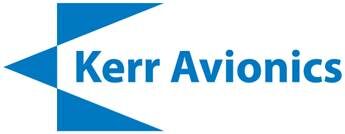Based on the award of exclusive rights to a concept conceived by Dr. Kerr and patented in his name while employed at Astronics Max-Viz, Inc. (U.S. Patent No. 7,705,879), Kerr Avionics LLC is developing this unique new, software-based technology in the field of Enhanced Vision Systems for fixed and rotary wing pilotage. The concept was initially developed during a cooperative activity with an FAA researcher, and was named Instrument Qualified Visual Range or “IQVR”.
Generally, IQVR will improve flight efficiency and safety in Fixed, Rotor and unmanned aerial platforms, including:
- In fixed-wing operations, increases range of current IR based EVS sensors by between 25 and 50% during fog and other DVE (Decreased Visual Environment) flight and ground-taxi operations. More efficient Air traffic flow and 100% Surface Movement Guidance (SMGCS) for on time dispatch.
- In rotary-wing operations, differentiates between the desired, “target” lights, and confusing clutter (other lights, and daytime/nighttime background features) for unequivocal, early visual Landing Zone (LZ) acquisition.
- For Unmanned Aerial Systems (UAS/Drones), IQVR enables street address specific landing and location identification as well as occupant status signaling during disaster search and rescue events
There exists a compelling need for these capabilities in both fixed and rotary wing operations.
Currently, avionics OEMs (such as Honeywell, Rockwell Collins, Elbit and others) offer certified “Enhanced Flight Vision Systems” (EFVS) that, when coupled with a Head-Up Display approach-to-landing guidance system, provide “landing credits” (lower approach ceilings for the aircraft). However, having spent on the order of $1B collectively, users are widely dissatisfied with the level and consistency of their performance; as a consequence, OEMs are struggling to improve the performance of their systems. The desire is to enable earlier acquisition of the landing zone during approach, thus providing increased customer satisfaction, and – most importantly – a marketing edge.
For fixed wing aircraft in instrument flight environments, the Kerr Avionics IQVR image processing software can dramatically increase the range of multi-spectral EVS and reduce (and potentially virtually eliminate) the occurrence of missed approaches due to weather. We need only to prove the performance enhancements with specific data, and at least one major OEM will partner to fund our home-stretch to production software.
For rotary wing aircraft, the Kerr Avionics IQVR image processing will also provide a significant function to emergency first responders and life flight operators at night by enabling the pilot to declutter light on the ground and only see the discrete landing zone lights. For offshore platforms, IQVR will “cut through the murk” and show an early outline of the LZ.
For Unmanned Aerial Systems (UAS/Drones), IQVR enables street address specific landing and location identification as well as occupant status signaling during disaster search and rescue events.
For Climate Change, significant decrease in the total yearly carbon foot print of all aviation activities due to vastly improved airspace traffic flow, and the virtual elimination of airlines flight deviations due to bad visibility/weather.
Can you think of any more applications for this technology-we would love to hear from you.
